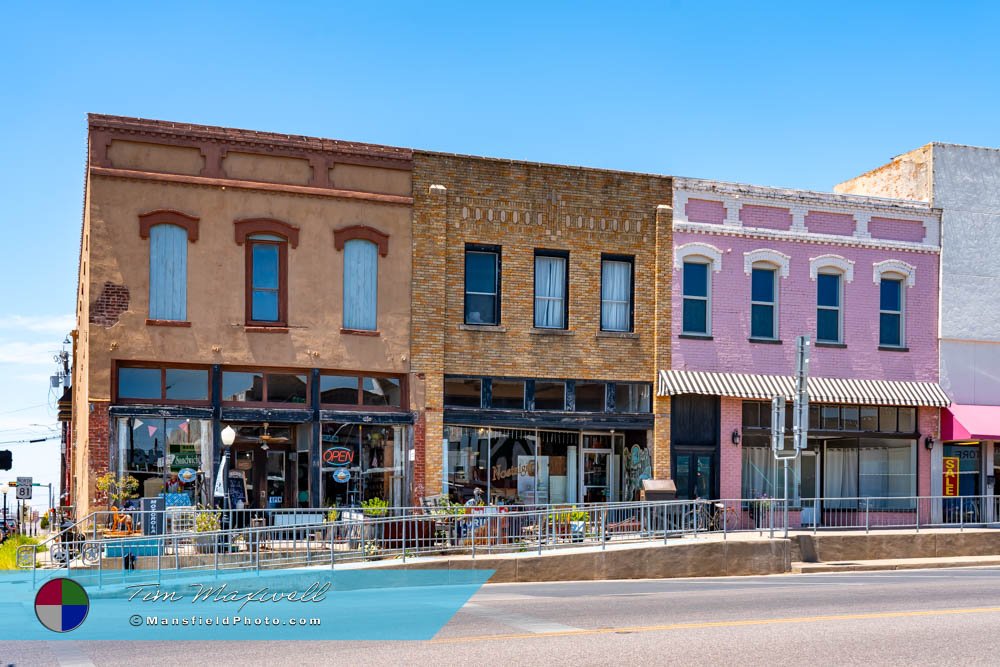Bowie, Texas
– A Frontier Town with Sharp History and Wild Tales.
Founded in 1881, Bowie, Texas, takes its name from one of the most famous figures in Texas history—James Bowie. Known for his role in the Texas Revolution and his famous knife-fighting skills, Bowie left a legacy that matched the rugged spirit of the town. The Bowie knife, a large hunting blade made famous by the man himself, symbolizes the frontier toughness that the town has carried throughout its history.
Early Growth and the Arrival of the Railroad
Bowie was established with the arrival of the Fort Worth and Denver Railway, which transformed the town from a simple settlement into a growing hub for commerce and trade. The town’s strategic location made it a stop for cattle drives and a shipping point for local farmers and ranchers. Bowie’s population surged as settlers arrived, drawn by the promise of fertile land and economic opportunity.
In its early years, Bowie became a rough-and-tumble town, much like others along the frontier. As more settlers arrived and businesses thrived, Bowie cemented its place in Texas as an important agricultural and trade center. By the early 1900s, the town was flourishing, with a population exceeding 5,000.
The Wild West: Bowie’s Infamous Bank Robberies
Bowie, like many frontier towns, experienced its share of crime. During the early 20th century, the town became notorious for bank robberies.
One of the most famous occurred in 1884, when outlaws robbed the First National Bank of Bowie. They left with over $10,000 in gold. They were chased, caught, and hanged for their crimes. These events brought excitement and danger to the streets of Bowie and contributed to the town’s Wild West image.
Despite these challenges, Bowie continued to grow and develop. The town became a center for cotton production, as well as other agricultural products, which helped stabilize the local economy through the early 20th century.
Points of Pride: Bowie Knife and Annual Traditions
One of Bowie’s most unique claims to fame is its connection to the Bowie knife. The town proudly embraces its namesake, with an annual Jim Bowie Days festival held every summer. The event celebrates frontier life with rodeo competitions, parades, and knife-throwing contests in honor of the famous blade. Visitors and locals alike come together to celebrate Bowie’s history and rugged spirit during this lively event.
Bowie also constructed the world’s largest Bowie knife. It measures an astounding 20 feet in length and weighs more than 2000 pounds, making it the world’s largest Bowie knife. This towering knife stands at the town’s entrance, welcoming visitors and paying tribute to the town’s unique heritage.
Bowie Today: A Blend of History and Growth
Today, Bowie is a thriving small town with a population of just over 5,000. While it remains deeply connected to its history, Bowie has also embraced modern growth.
Its economy has diversified, with industries such as manufacturing and energy production playing important roles. Agriculture remains vital, and the town’s location continues to make it an attractive place for business and residents alike.
Bowie’s downtown area is a charming mix of historic buildings and modern businesses. Local shops, restaurants, and antique stores offer a glimpse into the town’s past while providing amenities for today’s visitors. Bowie’s rich history, marked by its frontier beginnings and notorious bank robberies, remains a source of pride for the community.
A Town with Sharp History and Enduring Spirit
Bowie, Texas, stands as a testament to the resilience and determination of its people. From its namesake’s legendary knife to its tales of outlaws and robberies, Bowie’s past is as colorful as any in Texas. Today, the town continues to thrive, blending its historical roots with modern-day growth. Whether you’re drawn by its history or its annual celebrations, Bowie offers a unique slice of Texas heritage that continues to captivate and inspire.




